Bài giảng Introduction to Software Engineering - Week 9: Software testing - Nguyễn Thị Minh Tuyền
Software Testing
1. What is it?
2. Who does it?
3. What are the steps?
4. What is the work product?
5. How do I ensure that I’ve done it right?Topics covered
1. Development testing
2. Test-driven development
3. Release testing
4. User testing
3Program testing
£ Testing is intended
p to show that a program does what it is intended to do and
p to discover program defects before it is put into use.
£ When you test software, you execute a program using
artificial data.
£ You check the results of the test run for errors,
anomalies or information about the program's nonfunctional attributes.
£ Can reveal the presence of errors NOT their absence.
£ Testing is part of a more general verification and
validation process, which also includes static validation
techniques.
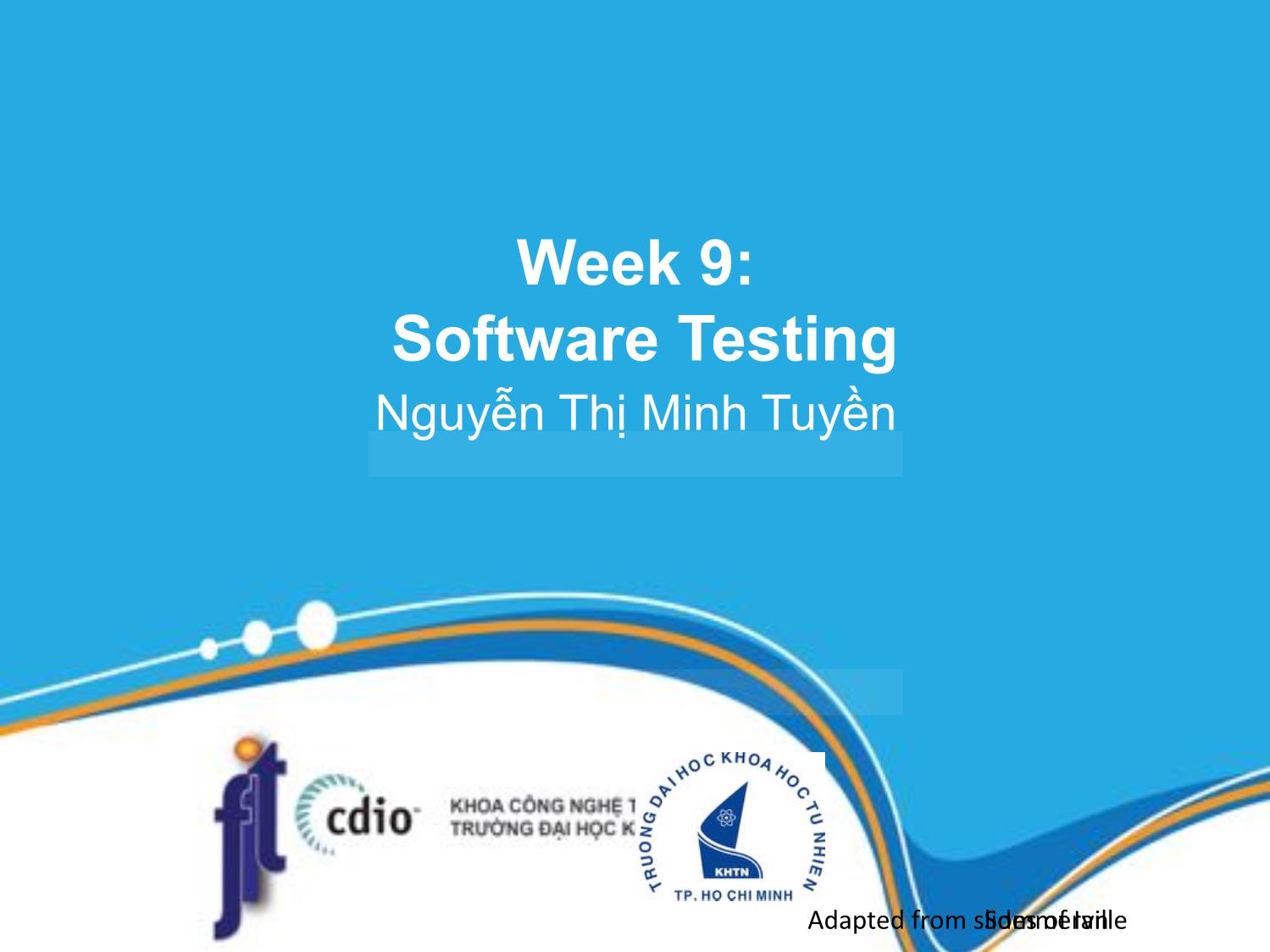
Trang 1
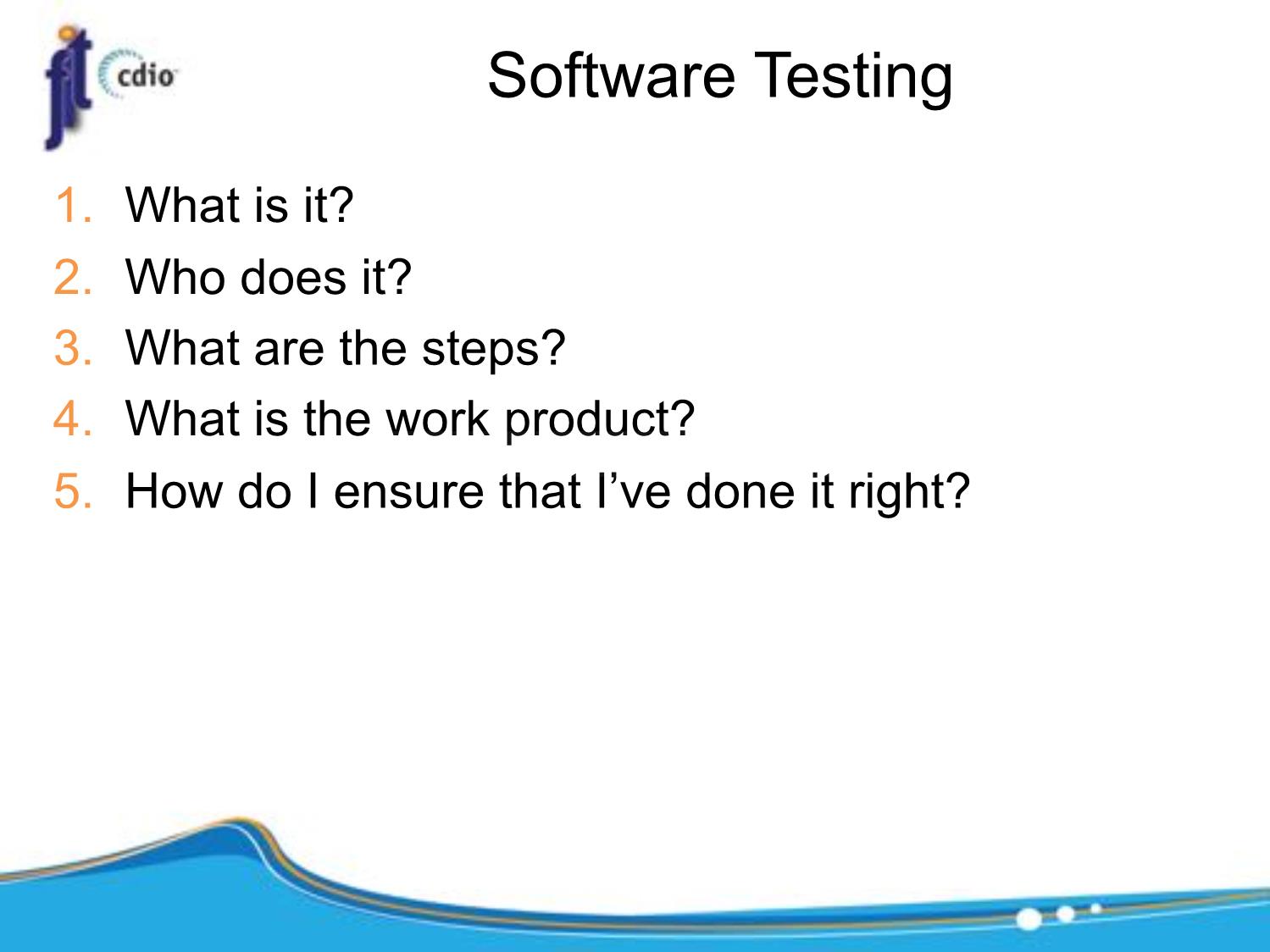
Trang 2
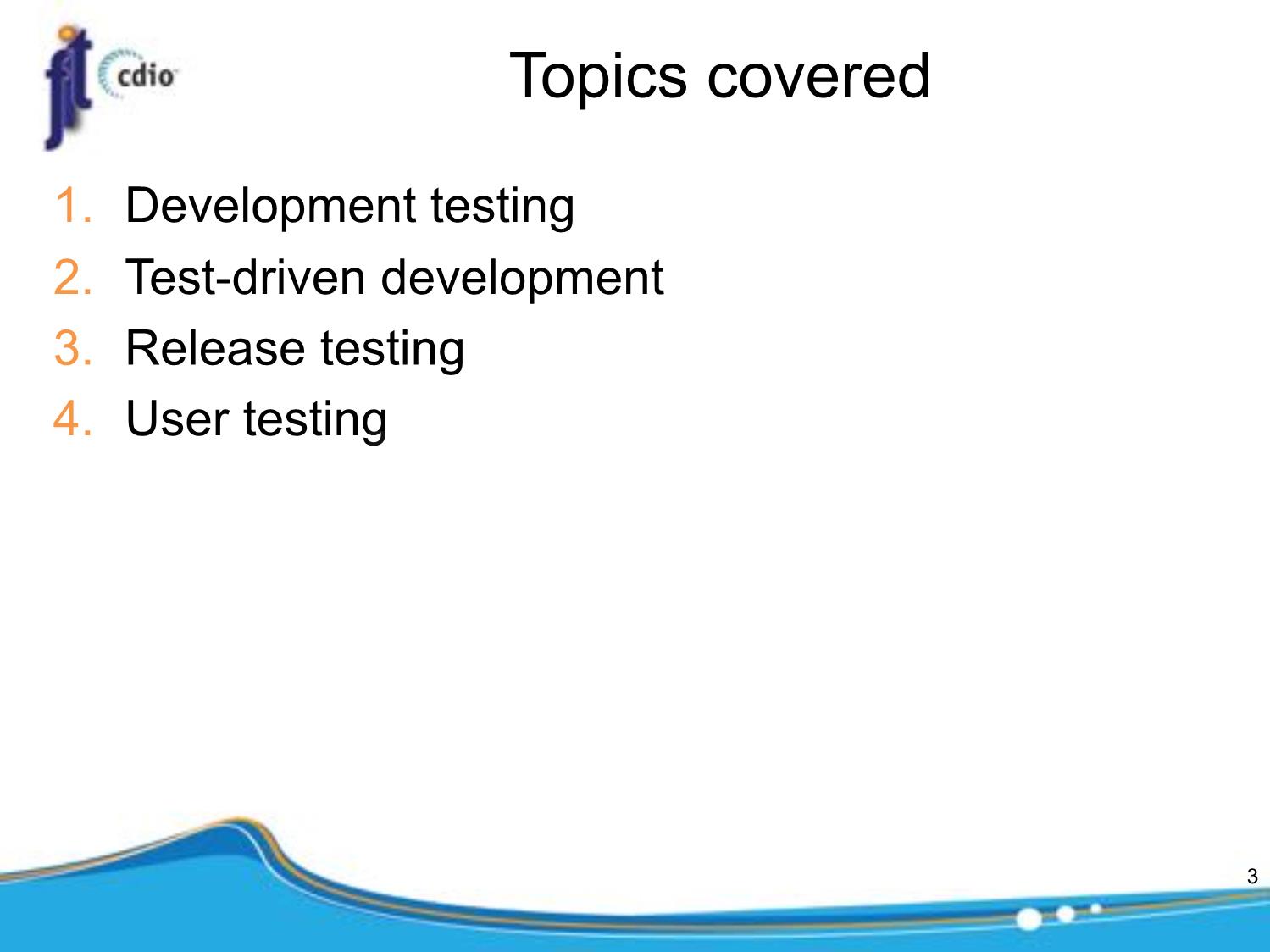
Trang 3
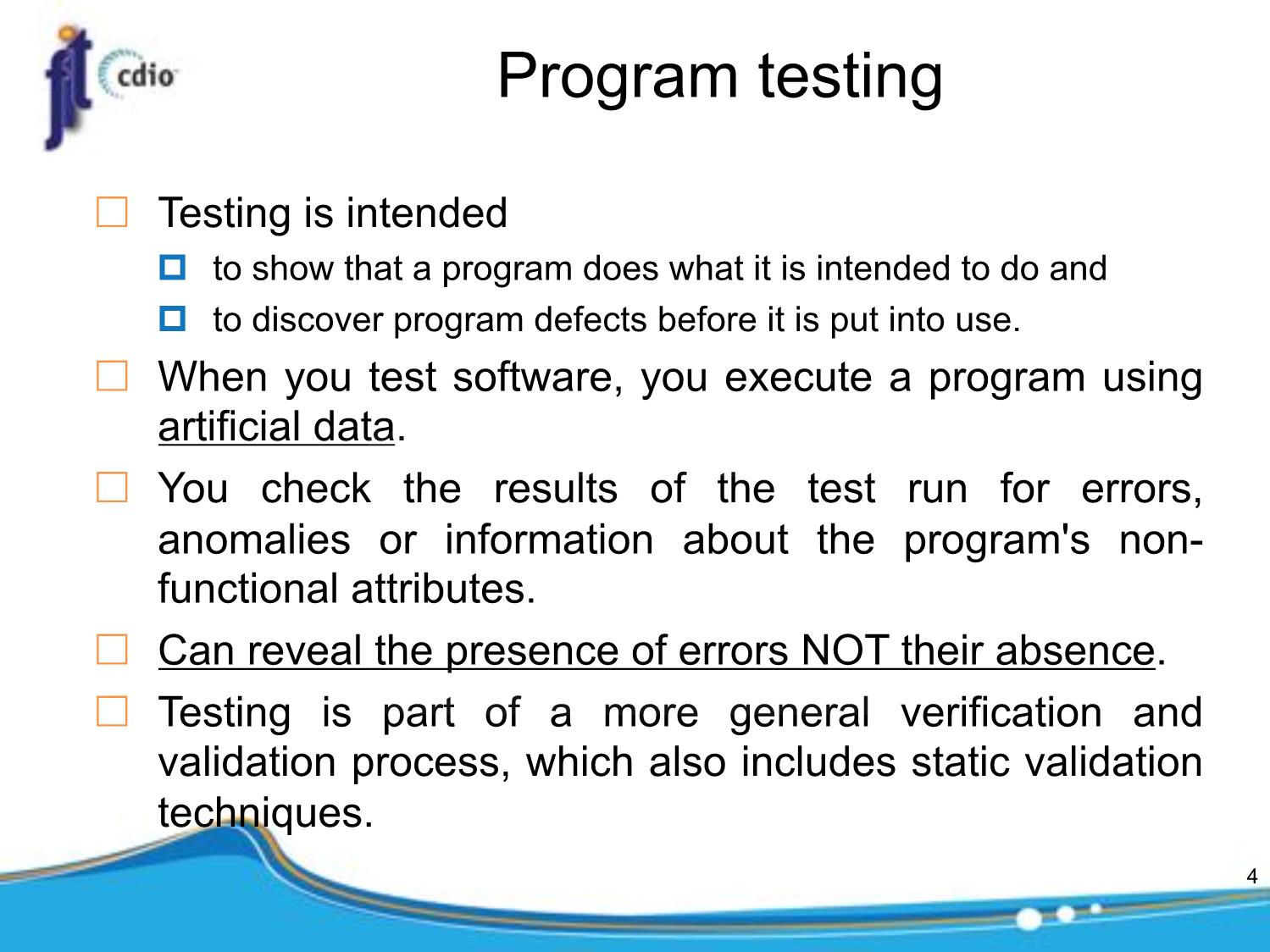
Trang 4
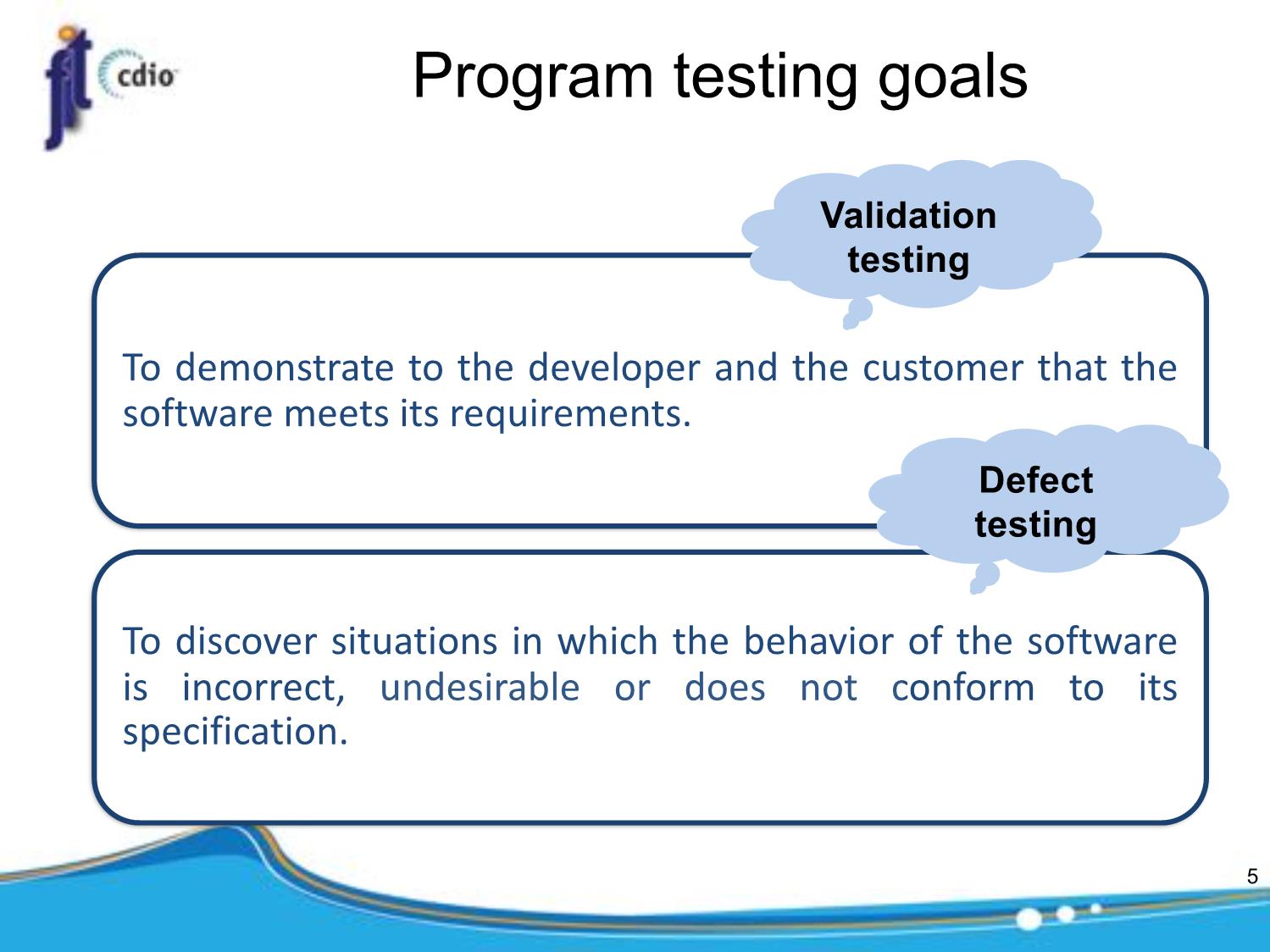
Trang 5
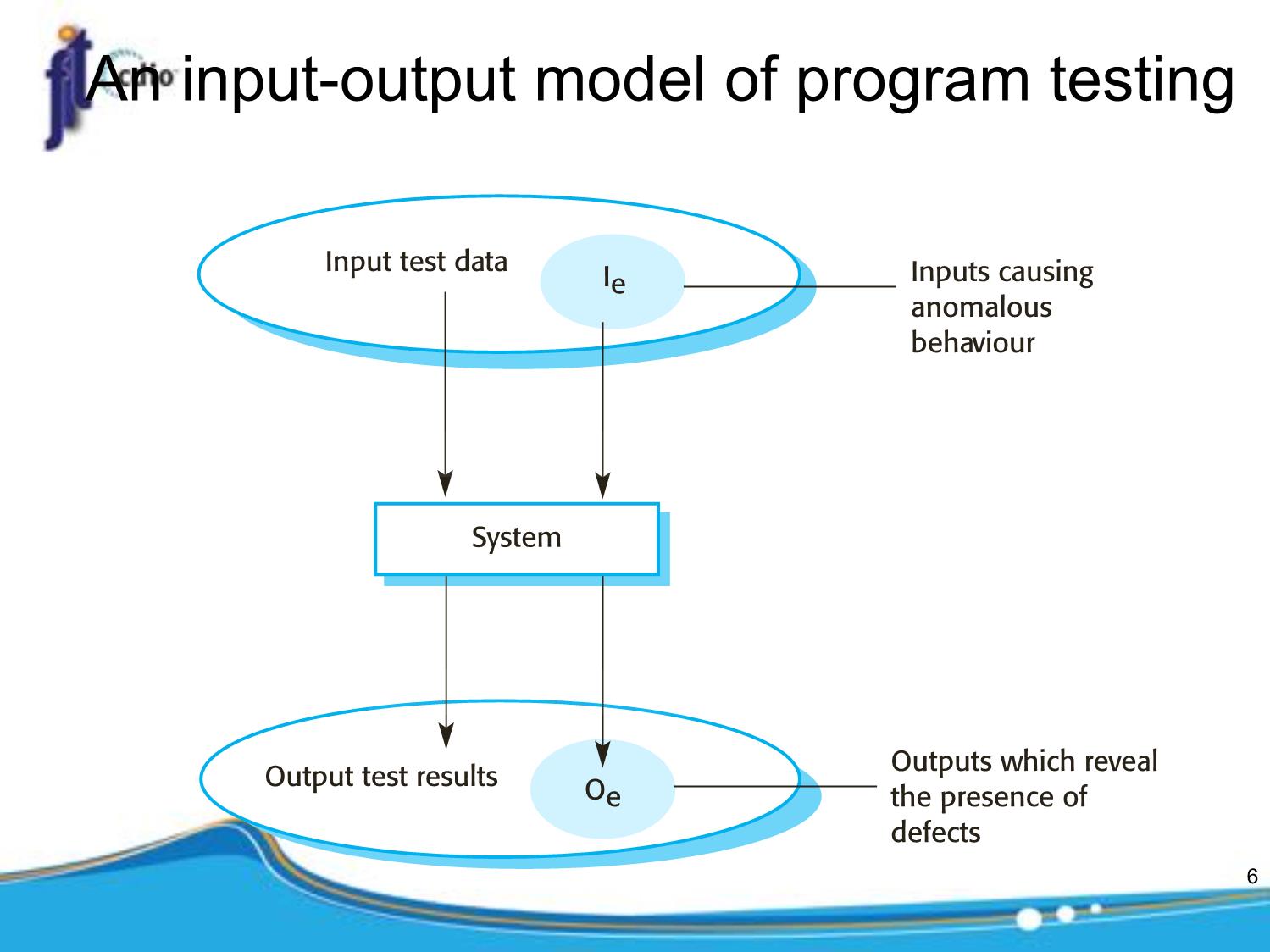
Trang 6
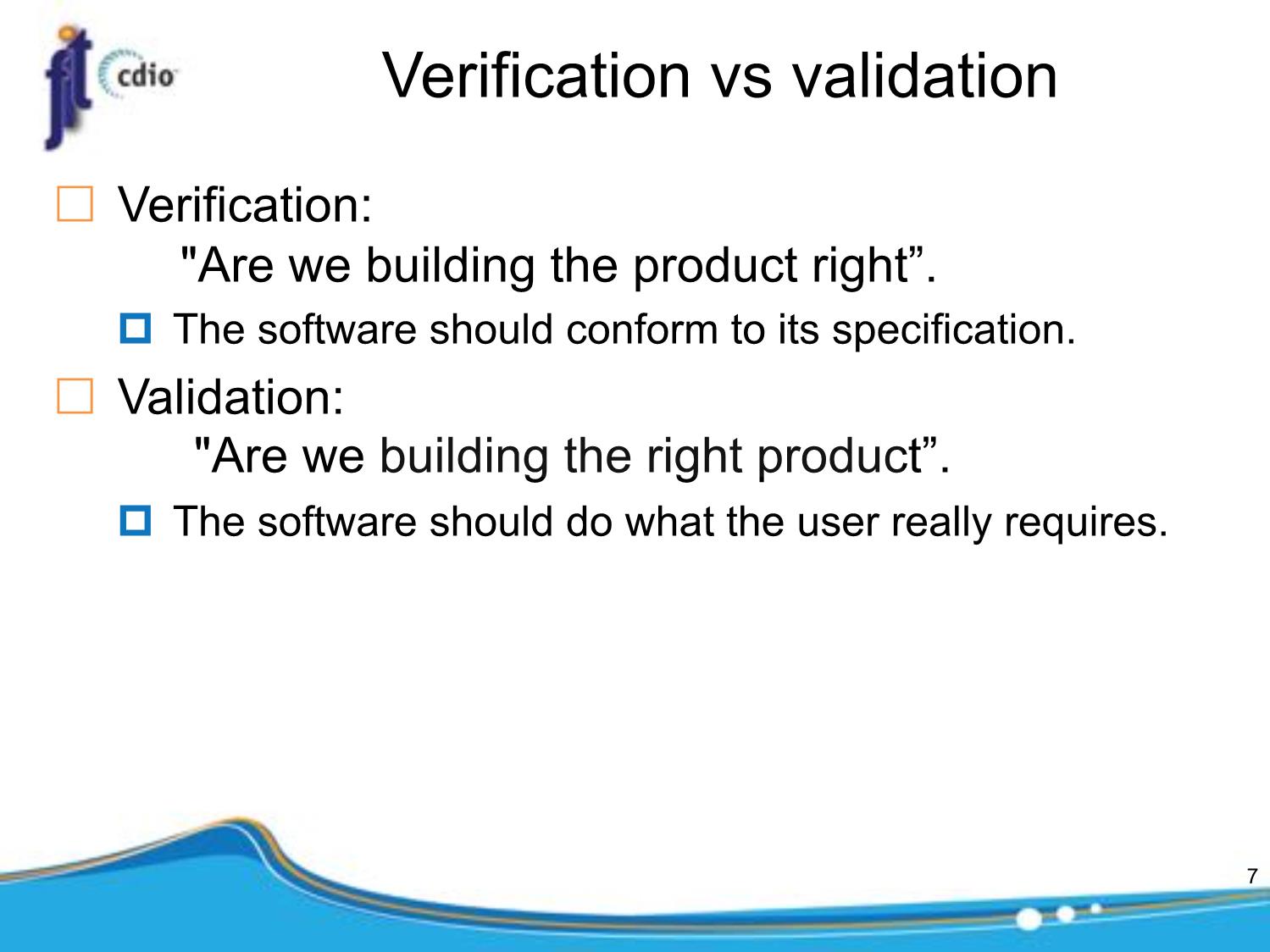
Trang 7

Trang 8
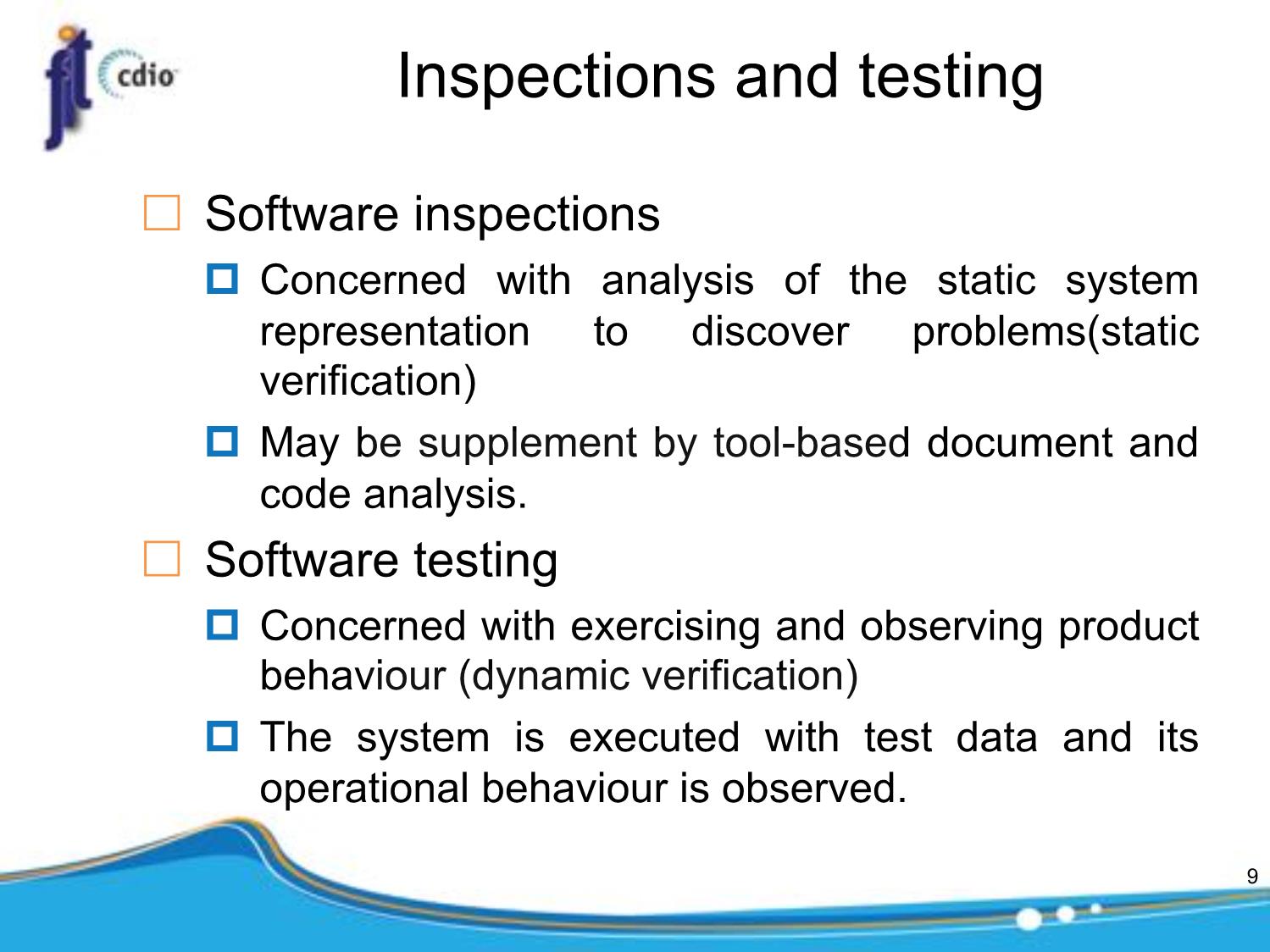
Trang 9
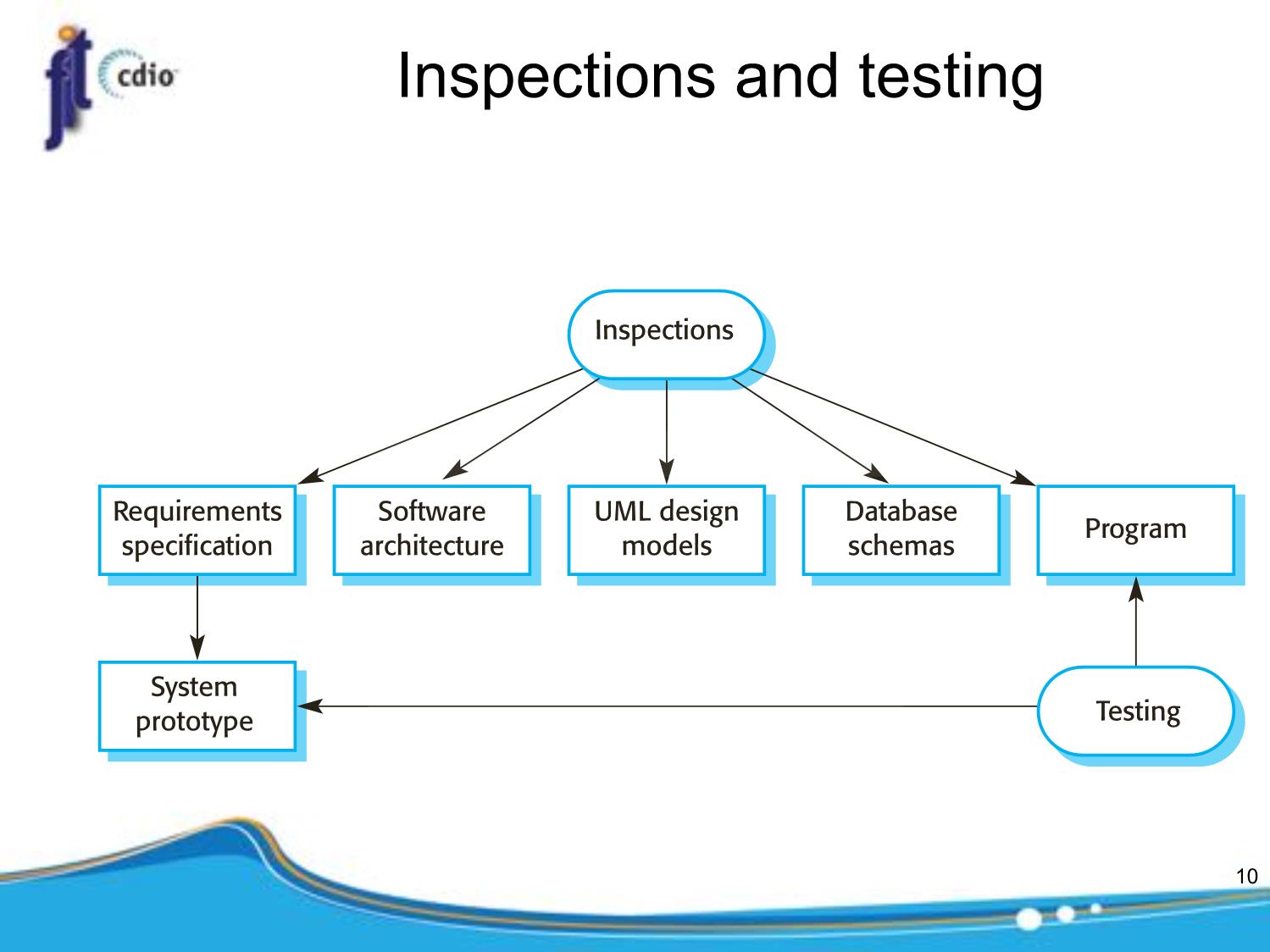
Trang 10
Tải về để xem bản đầy đủ
Tóm tắt nội dung tài liệu: Bài giảng Introduction to Software Engineering - Week 9: Software testing - Nguyễn Thị Minh Tuyền
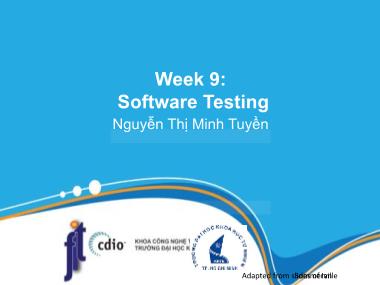
station object interface WeatherStation identifier reportWeather ( ) reportStatus ( ) powerSave (instruments) remoteControl (commands) reconfigure (commands) restart (instruments) shutdown (instruments) 20 Remind: Weather station state diagram Controlled Operation shutdown() remoteControl() reportStatus() restart() Testing Shutdown Running transmission done test complete configuration done reconfigure() Transmitting powerSave() clock collection done reportWeather() Configuring weather summary complete Summarizing Collecting 21 Weather station testing £ Using a state model, identify sequences of state transitions to be tested and the event sequences to cause these transitions £ For example: p Shutdown à Running à Shutdown p Configuring à Running à Testing à Transmitting à Running p Running à Collecting à Running à Summarizing à Transmitting à Running 22 Automated testing £ Whenever possible, unit testing should be automated so that tests are run and checked without manual intervention. £ In automated unit testing: use a test automation framework (such as JUnit) to write and run program tests. p Unit testing frameworks provide generic test classes that you extend to create specific test cases. p They can then run all of the tests that you have implemented and report, often through some GUI, on the success of otherwise of the tests. 23 Automated test components £ A setup part p initialize the system with the test case, namely the inputs and expected outputs. £ A call part p call the object or method to be tested. £ An assertion part p compare the result of the call with the expected result. If the assertion evaluates to true, the test has been successful; if false, then it has failed. 24 Unit test effectiveness £ The test cases should show that the component that you are testing does what it is supposed to do. £ If there are defects in the component, these should be revealed by test cases. £ 2 types of unit test case: p The first type: reflect normal operation of a program and should show that the component works as expected. p The second type: based on testing experience of where common problems arise. It should use abnormal inputs to check that these are properly processed and do not crash the component. 25 Testing strategies £ Partition testing p Identify groups of inputs that have common characteristics and should be processed in the same way. p Should choose tests from within each of these groups. £ Guideline-based testing p Use testing guidelines to choose test cases. p These guidelines reflect previous experience of the kinds of errors that programmers often make when developing components. 26 Partition testing £ Input data and output results often fall into different classes where all members of a class are related. £ Each of these classes is an equivalence partition or domain where the program behaves in an equivalent way for each class member. £ Test cases should be chosen from each partition. 27 Equivalence partitions 3 11 4710 Less than 4Between 4 and 10 More than 10 Number of input values 9999 100000 10000 50000 99999 Less than 10000Between 10000 and 99999 More than 99999 Input values 28 Equivalence partitioning Input equivalence partitions Output partitions System Possible inputs Correct outputs Possible outputs 29 Example: Testing guidelines (sequences) £ Test software with sequences which have only a single value. £ Use sequences of different sizes in different tests. £ Derive tests so that the first, middle and last elements of the sequence are accessed. £ Test with sequences of zero length. 30 General testing guidelines £ Choose inputs that force the system to generate all error messages £ Design inputs that cause input buffers to overflow £ Repeat the same input or series of inputs numerous times £ Force invalid outputs to be generated £ Force computation results to be too large or too small. 31 Component testing £ Software components are often composite components that are made up of several interacting objects. £ You access the functionality of these objects through the defined component interface. £ Testing composite components should therefore focus on showing that the component interface behaves according to its specification. p You can assume that unit tests on the individual objects within the component have been completed. 32 Interface testing Test cases A B C 33 Interface testing £ Objectives: detect faults due to interface errors or invalid assumptions about interfaces. £ Interface types p Parameter interfaces Data passed from one method or procedure to another. p Shared memory interfaces Block of memory is shared between procedures or functions. p Procedural interfaces Sub-system encapsulates a set of procedures to be called by other sub-systems. p Message passing interfaces Sub-systems request services from other sub-systems 34 Interface errors £ Interface misuse p A calling component calls another component and makes an error in its use of its interface e.g. parameters in the wrong order. £ Interface misunderstanding p A calling component embeds assumptions about the behaviour of the called component which are incorrect. £ Timing errors p The called and the calling component operate at different speeds and out-of-date information is accessed. 35 Interface testing guidelines £ Design tests so that parameters to a called procedure are at the extreme ends of their ranges. £ Always test pointer parameters with null pointers. £ Design tests which cause the component to fail. £ Use stress testing in message passing systems. £ In shared memory systems, vary the order in which components are activated. 36 System testing £ Involves integrating components to create a version of the system and then testing the integrated system. £ Focus on testing the interactions between components. £ Checks that components are compatible, interact correctly and transfer the right data at the right time across their interfaces. 37 System and component testing £ During system testing, reusable components that have been separately developed and off-the-shelf systems may be integrated with newly developed components. The complete system is then tested. £ Components developed by different team members or sub-teams may be integrated at this stage. System testing is a collective rather than an individual process. p In some companies, system testing may involve a separate testing team with no involvement from designers and programmers. 38 Use-case testing £ The use-cases developed to identify system interactions can be used as a basis for system testing. £ Each use case usually involves several system components so testing the use case forces these interactions to occur. £ The sequence diagrams associated with the use case documents the components and interactions that are being tested. 39 Collect weather data sequence chart Weather information system SatComms WeatherStation Commslink WeatherData request (report) acknowledge reportWeather () acknowledge get (summary) summarise () send (report) acknowledge reply (report) acknowledge 40 Testing policies £ Exhaustive system testing is impossible so testing policies which define the required system test coverage may be developed. £ Examples of testing policies: p All system functions that are accessed through menus should be tested. p Combinations of functions that are accessed through the same menu must be tested. p Where user input is provided, all functions must be tested with both correct and incorrect input. 41 Topics covered £ Development testing £ Test-driven development £ Release testing £ User testing 42 Test-driven development (TDD) £ An approach to program development in which you inter-leave testing and code development. £ Tests are written before code and 'passing' the tests is the critical driver of development. £ You develop code incrementally, along with a test for that increment. £ Part of agile methods, such as Extreme Programming. p It can also be used in plan-driven development processes. 43 Test-driven development Identify new pass functionality fail Implement Write test Run test functionality and refactor 44 TDD process activities £ Start by identifying the increment of functionality that is required. p This should normally be small and implementable in a few lines of code. £ Write a test for this functionality and implement this as an automated test. £ Run the test, along with all other tests that have been implemented. p Initially, you have not implemented the functionality so the new test will fail. £ Implement the functionality and re-run the test. £ Once all tests run successfully, you move on to implementing the next chunk of functionality. 45 Benefits of test-driven development £ Code coverage p Every code segment that you write has at least one associated test è all code written has at least one test. £ Regression testing p A regression test suite is developed incrementally as a program is developed. £ Simplified debugging p When a test fails, it should be obvious where the problem lies. The newly written code needs to be checked and modified. £ System documentation p The tests themselves are a form of documentation that describe what the code should be doing. 46 Regression testing £ Regression testing is testing the system to check that changes have not 'broken' previously working code. £ In a manual testing process, regression testing is expensive but, with automated testing, it is simple and straightforward. All tests are rerun every time a change is made to the program. £ Tests must run 'successfully' before the change is committed. 47 Topics covered £ Development testing £ Test-driven development £ Release testing £ User testing 48 Release testing £ Is the process of testing a particular release of a system that is intended for use outside of the development team. £ Main goal: convince the supplier of the system that it is good enough for use. £ Is usually a black-box testing process where tests are only derived from the system specification. 49 Release testing and system testing £ Release testing is a form of system testing. £ Important differences: p A separate team that has not been involved in the system development, should be responsible for release testing. p System testing by the development team should focus on discovering bugs in the system (defect testing). The objective of release testing is to check that the system meets its requirements and is good enough for external use (validation testing). 50 Requirements-based testing £ Requirements-based testing involves examining each requirement and developing a test or tests for it. £ Mentcare system requirements: p If a patient is known to be allergic to any particular medication, then prescription of that medication shall result in a warning message being issued to the system user. p If a prescriber chooses to ignore an allergy warning, they shall provide a reason why this has been ignored. 51 Requirements tests 1. Set up a patient record with no known allergies. Prescribe medication for allergies that are known to exist. Check that a warning message is not issued by the system. 2. Set up a patient record with a known allergy. Prescribe the medication to that the patient is allergic to, and check that the warning is issued by the system. 3. Set up a patient record in which allergies to two or more drugs are recorded. Prescribe both of these drugs separately and check that the correct warning for each drug is issued. 4. Prescribe two drugs that the patient is allergic to. Check that two warnings are correctly issued. 5. Prescribe a drug that issues a warning and overrule that warning. Check that the system requires the user to provide information explaining why the warning was overruled. 52 Performance testing £ Part of release testing may involve testing the emergent properties of a system, such as performance and reliability. £ Tests should reflect the profile of use of the system. £ Performance tests usually involve planning a series of tests where the load is steadily increased until the system performance becomes unacceptable. £ Stress testing is a form of performance testing where the system is deliberately overloaded to test its failure behaviour. 53 Topics covered £ Development testing £ Test-driven development £ Release testing £ User testing 54 User testing £ Users or customers provide input and advice on system testing. £ Is essential, even when comprehensive system and release testing have been carried out. p The reason for this is that influences from the user’s working environment have a major effect on the reliability, performance, usability and robustness of a system. These cannot be replicated in a testing environment. 55 Types of user testing £ Alpha testing p Users of the software work with the development team to test the software at the developer's site. £ Beta testing p A release of the software is made available to users to allow them to experiment and to raise problems that they discover with the system developers. £ Acceptance testing p Customers test a system to decide whether or not it is ready to be accepted from the system developers and deployed in the customer environment. Primarily for custom systems. 56 The acceptance testing process Test Test Testing Test Tests criteria plan results report Define Plan Derive Run Negotiate Accept or acceptance acceptance acceptance acceptance test results reject criteria testing tests tests system 57 Agile methods and acceptance testing £ The user/customer is part of the development team and is responsible for making decisions on the acceptability of the system. £ Tests are defined by the user/customer and are integrated with other tests in that they are run automatically when changes are made. £ There is no separate acceptance testing process. £ Main problem here is whether or not the embedded user is 'typical' and can represent the interests of all system stakeholders. 58 V-model Requirements System System Detailed specification specification design design System Sub-system Module and Acceptance integration integration unit code test plan test plan test plan and test Acceptance System Sub-system Service test integration test integration test Questions? 60
File đính kèm:
 bai_giang_introduction_to_software_engineering_week_9_softwa.pdf
bai_giang_introduction_to_software_engineering_week_9_softwa.pdf

